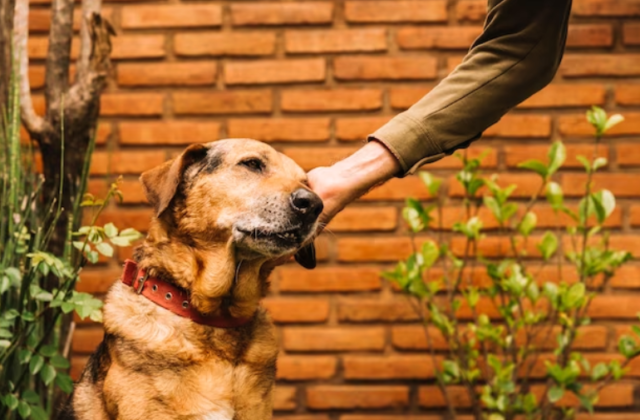Introduction
Dogs are wonderful companions, but they can exhibit peculiar behaviors that leave us puzzled. One such behavior is nail chewing. In this comprehensive guide, we will delve into the reasons why dog chewing nails, explore preventative measures, and provide effective solutions for this common issue.
Understanding Why Dogs Chew Their Nails
-
The Natural Instinct to Maintain Nail Length
- Dogs’ nails constantly grow, and chewing can help them keep their nails at a comfortable length.
- Chewing may also serve as a way for dogs to remove any sharp or jagged edges.
-
Anxiety, Boredom, and Stress
- Dogs, just like humans, may resort to nail chewing as a coping mechanism when they feel anxious, bored, or stressed.
- Separation anxiety, changes in routine, or a lack of mental stimulation can contribute to this behavior.
-
Medical Conditions
- Certain medical conditions, such as allergies, skin infections, or paw injuries, can cause discomfort and lead to nail chewing.
- It’s essential to rule out any underlying health issues with the help of a veterinarian.
Prevention Techniques to Deter Nail Chewing
-
Regular Nail Trimming
- Maintain your dog’s nails at an appropriate length through regular trimming.
- Consult a professional groomer or learn how to trim your dog’s nails safely at home.
-
Provide Ample Physical and Mental Stimulation
- Engage your dog in regular exercise to prevent boredom and anxiety.
- Stimulate their minds with interactive toys, puzzles, and obedience training sessions.
-
Create a Safe and Calming Environment
- Ensure your dog feels secure and comfortable at home.
- Establish a designated space with cozy bedding, soothing music, and calming pheromone diffusers.
-
Introduce Distractions and Substitute Chewing Objects
- Offer appropriate chew toys and bones to redirect your dog’s chewing behavior.
- Opt for toys that promote dental health and provide mental stimulation.
Effective Solutions for Dogs Chewing Their Nails
-
Consult a Veterinarian
- If your dog’s nail chewing persists or is accompanied by other concerning symptoms, consult a veterinarian for a thorough examination.
- They can determine if there are any underlying medical issues contributing to the behavior.
-
Behavioral Training
- Enroll your dog in obedience classes or consult a professional dog trainer for guidance on behavior modification techniques.
- Positive reinforcement and redirection strategies can help redirect their focus away from nail chewing.
-
Medication or Supplements
- In some cases, veterinarians may recommend medication or supplements to alleviate anxiety or address underlying medical conditions.
- Always consult a professional before administering any medication to your dog.
Conclusion
Understanding why dogs chew their nails is the first step toward finding effective solutions. By addressing the root causes, implementing preventative measures, and seeking professional guidance when needed, you can help your dog overcome this behavior and promote their overall well-being.
FAQs
Q1: Is it normal for dogs to chew their nails?
Some nail chewing is considered normal, but excessive chewing or accompanied by other symptoms may indicate an underlying issue.
Q2: Can nail chewing lead to infections?
Yes, if your dog's nails are chewed excessively, it can lead to skin irritations and potential infections. Regular grooming and prevention techniques can help mitigate this risk.
Q3: How can I trim my dog's nails without causing them discomfort?
It's best to consult a professional groomer or veterinarian to learn proper nail trimming techniques. They can guide you on how to trim your dog's nails safely and comfortably.
Q4: Are there specific breeds more prone to nail chewing?
Any dog breed can exhibit nail chewing behavior, but some may be more prone due to factors such as anxiety levels or genetic predisposition.
Q5: Can I use bitter sprays to deter my dog from nail chewing?
Bitter sprays can be effective in deterring dogs from chewing their nails. However, it's essential to use pet-safe products and consult a professional before application.
Read also
- 5 Foolproof Steps to Master Puppy Crate Training
- Best Dog Food for Shih Tzu With Allergies
- Discover the Best Natural Dog Shampoo for a Happy and Healthy Pet
- Discover the Best Dog Food for German Shepherd Puppy: Unveiling the Ultimate Guide!
- Find the Best Dog Food for Your Shih Tzu
- Understanding the Phrase “My Dogs Are Barking” and Its Meaning
- Best Dog Food for Older Dogs: Nourishing Your Senior Canine Companion
- Lion Dog Breed: A Perfect Blend of Beauty and Grace
- Choosing the Best Dog Food for Your Husky Puppy: Ultimate Guide
- Unraveling the Mystery: All About the Scooby Doo Dog Breed
- Best Dog Food for Husky: Unleash Their Health
- Supplements for Dog Allergies: Alleviating Itchy Woes
- Best Dog Food for Labrador Retrievers: Providing Optimal Nutrition
- The Ultimate Guide: How to Give a Dog a Pill When They’re Not Eating
- Best Anti Barking Device: Silence Your Dog’s Excessive Noise
- Vet Approved Homemade Dog Food Recipes for Kidney Disease
- Stop Dog Chewing Paws Now! Effective Home Remedy for Happy Pups
- The Shiba Inu Pitbull Mix: A Fascinating Crossbreed
- Stop Your Dog’s Tail Chewing Habits with These Effective Strategies
- Dog Allergies: Understanding the Causes and Solutions






